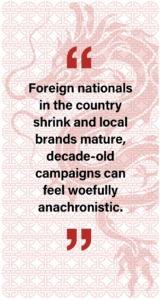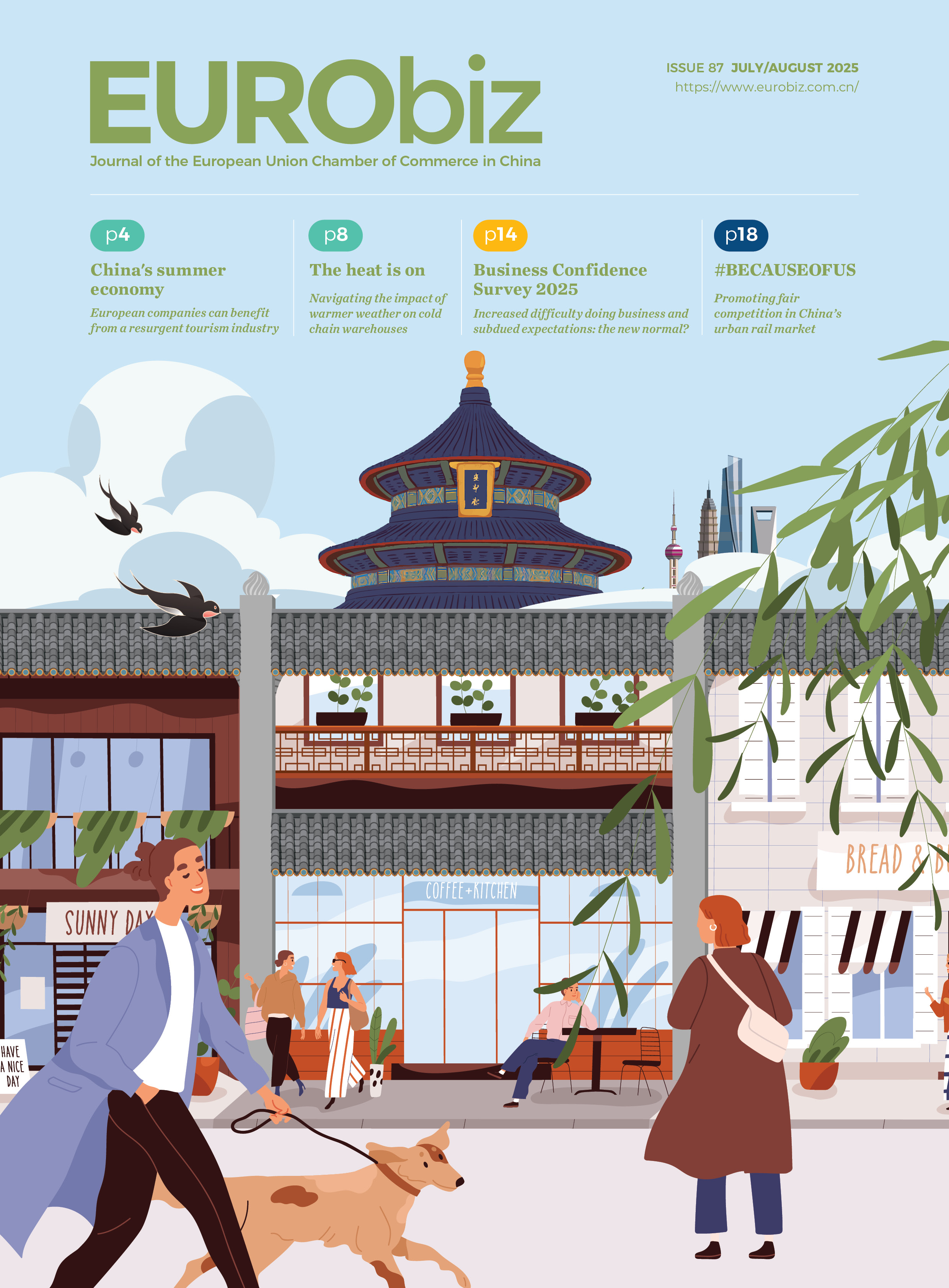
European brands need to rethink how they reach Chinese consumers
European consumer brands long flourished in China with minimal cultural adaptation. But as growth slows and competition intensifies, once helpful assumptions have started to hold companies back. Gabor Holch explains how a deeper understanding of local culture can help European firms reorientate their strategies, innovate more effectively and connect with today’s Chinese consumers.
For many European brands, China’s past two decades offered an extraordinary opportunity: enter a vast, fast-growing market in which Western products were often embraced with enthusiasm and trust. Since upwardly mobile Chinese consumers aspired to lifestyles that resembled traditional Western markets, European firms in industries from fashion to food achieved success without fundamentally adjusting their value propositions to local realities.
Today, that landscape has shifted. What once worked by default now requires deliberate design. Consumers are more informed, competition is fierce, and national pride and political sensitivities feature more strongly in consumer choices. Consequently, the cultural blind spots that once went unnoticed now cost brands market share, loyalty and reputation.
Despite ambitions to decouple, promoted in certain political and commercial decision-making circles on both the European and Chinese sides, most European consumer brands need China to subsist and develop. To remain competitive in a changing China, they need new leadership approaches that place intercultural insight at the centre of strategy, product development and promotion.
As usual, the hardest part of adopting new mindsets will be abandoning old beliefs about China and the brands themselves. But it is possible to ditch outdated assumptions and replace them with better-informed practices.
1. Strategy: Prestige is no longer granted
Myth: Western brands are always aspirational in China.
Many brand leaders continue to believe that a European label is enough to attract customers in China. True, for many years, affluent Chinese competed for suitcase-traded ‘daigou’ imports from Europe, and upgraded from locally made to imported German cars. Those days are gone. Prestige today is not inherited – it is earned through relevance and engagement.
Fast fashion firms rode the waves of Europe’s brand power to popularity in China, but later failed to keep up with changing tastes, social expectations, competitive pressure from domestic labels and, in some cases, necessary public relations practices. Loss of cultural resonance led to loss of business.
In contrast, IKEA executives noticed space constraints and different living habits in Chinese cities. The firm adapted by launching compact stores, adding delivery services and collaborating with local designers. While the brand continues to attract curious urban consumers with its invitation to a Swedish lifestyle, its products are customised for a specifically Chinese experience.
What leaders can do: Develop strategies that treat cultural relevance as a core asset, not a ‘nice-to-have’ side issue. Success in China today depends less on legacy reputation and more on how well a brand aligns with evolving local values and lifestyles.
2. Product: Local symbolism is not enough
Myth: Adding Chinese motifs makes a product local.
Each year, Western brands release red-and-gold packaging or zodiac-themed products for the Chinese New Year. That worked for decades: veteran foreign residents remember long queues for Häagen-Dazs mooncakes and special edition Swiss luxury watches. Today, such gestures are expected but no longer sufficient. Real localisation must go deeper into everyday use, sensory preferences and social habits.
Many European skincare and cosmetic brands continue to promote products formulated for European skin tones and climates, often featuring Western models in their commercials. Meanwhile, more successful competitors address more timely consumer concerns like sensitivity to pollution, skin-brightening routines and specifically Asian wrinkle treatment habits that dominate local demand.
Confectionery brand Lindt succeeds by tailoring product choices and packaging to local gift-giving culture and holidays. Rather than relying solely on Western associations of indulgence and craftsmanship, the Swiss chocolate maker has customised premium gift boxes with occasion-specific colours and messaging, and collaborates with local artists to position itself in line with both modern and traditional Chinese values.
What leaders can do: Involve local management, distributors and consumers in product design from the beginning. Gather insights through testing, feedback loops and partnerships with local creators. Localisation is structural, not seasonal.
3. Promotion: Translations do not tell local stories
Myth: Sustainability and quality sell themselves.
Even the most well-crafted global campaigns fall flat in China if they miss the tone, traditions or platform-specific style that consumers expect in the given segment. Successful promotion today is not about translating slogans – it is about joining social conversations.
Several European brands have tried to highlight their environmental credentials or craftsmanship using repurposed global ads. But without clear local context or relevance to Chinese values, these messages feel generic at best, completely out of context or outright offensive at worst.
As a creative example, Adidas has embraced short-form video, influencer partnerships and subcultural aesthetics on platforms like Douyin and Xiaohongshu. Their best campaigns feel native, not imported, speak directly to the communities they aim to reach, and often go viral for instantly obvious reasons.
What leaders can do: Build marketing teams that combine global consistency with local voices. That means hiring or partnering with content creators who understand the nuances of Chinese platforms, humour and emerging consumer groups.
4. Image: Political tact and tactics can save brands
Myth: Modern China prioritises capital over communism.
Each generation at European headquarters has misconceptions about China’s modernisation. Executives over 40 recall the 2010 Shanghai World Expo motto to “welcome the world with open arms”. Younger managers engaged China with the Great Firewall already in place. Most struggle with the stark contrast of tightening Party control over business and government messaging that emphasises reform and opening.
China’s march towards a self-sustaining national economy inadvertently entangles foreign brands. Executives must accept that unlike in the European Union (EU) or the United States, politics are beyond their control. EU firms have suffered hostile publicity, fines and closures for their home government’s policies, for violating ‘socialist morality’ or their websites listing Taiwan as a country. Legal compliance cannot prevent such attacks, but instant action may mitigate the damage.
Most political slips only reveal themselves in retrospect. When trouble strikes, executives must first assess whether the firm broke Chinese laws. Mostly that is not the case, and a legal remedy is unnecessary. Pressure may come from outraged authorities, public outcry or both – the difference is often obscure. Seasoned foreign executives learned from local firms that damage control requires fast and decisive outreach often called ‘biaotai’, or publicly showing the right attitude.
What leaders can do: Multinational firms have gradually mastered local public relations techniques. Denying accusations puts firms on the defensive, e.g. Carrefour during protests against the 2008 Olympics in France. In response, foreign executives have followed the local example and mastered the art of public apologies in various media, from press releases to videos of scripted regret.

Leadership: Co-authoring China’s new chapter
What ties positive examples together is not just execution – it is mindset. Many European executives still rely on experience built during China’s boom years. But as China’s global confidence grows, foreign nationals in the country shrink and local brands mature, decade-old campaigns can feel woefully anachronistic. The new era of consumer behaviour demands a different approach that relies less on managing brand legacy and more on co-creating relevance with local insight.
Leadership teams that manage that transition for European brands must become more culturally agile. That does not mean abandoning global values, but rather interpreting them in ways that speak to today’s China – a market where loyalty is earned every day, not assumed from the past. Brands that rely on multinational teams on all levels, listen to all relevant voices and craft truly localised brand experiences will earn their seat in the writer’s room of China’s next, doubtlessly fascinating commercial chapter.
Gabor Holch coaches and advises multinational executives on upgrading their skills from competent managers to corporate leaders with global mindsets. China-based since 2002 and working globally, Gabor is a Certified Management Consultant (CMC) in English and Mandarin, and licenced in major assessment tools including DISC, MBTI, Predictive Index and NeuroColor. His book, Dragon Suit: The golden age of expatriate executives in China, was published in 2023.


Recent Comments